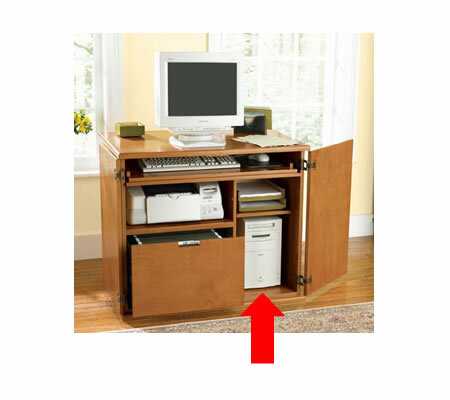Have you checked out the back of the desk you intend to buy to see if there are any vent slots? If not, you may be able to drill some or install a vent grille. I have modified a couple of desks like this in my time by carefully drilling a row of 8mm holes in the thin board at the back of the desk about 10mm from the top and bottom of the area where the PC will sit.
Drill the back board before you put it in place (on a work bench, on the floor or a protected table surface). If the back board is thin plywood/fibre board, mark out the drilling positions and put a piece of (unwanted or spare) softwood under where the holes will be - this stops the drill bit from ripping up the material or punching out bigger holes when the drill breaks through. Use a wood drill bit to give a clean cut - HSS/metal drills may not break through cleanly at all.


1+1 Major players like IBM, HP, Dell, etc have spent a fair bit of money and research on this. You really need cool one side and hot the other – Dave M – 2011-03-25T18:02:28.423
1Well, the air intake could be at the back, so it should work. Not sure if I want to have hot air blowing on me though. – Xavierjazz – 2011-03-25T18:09:12.947
1That's the other reason they aren't on the front. The hot air would be blasting out toward the user. – BBlake – 2011-03-25T18:33:20.297